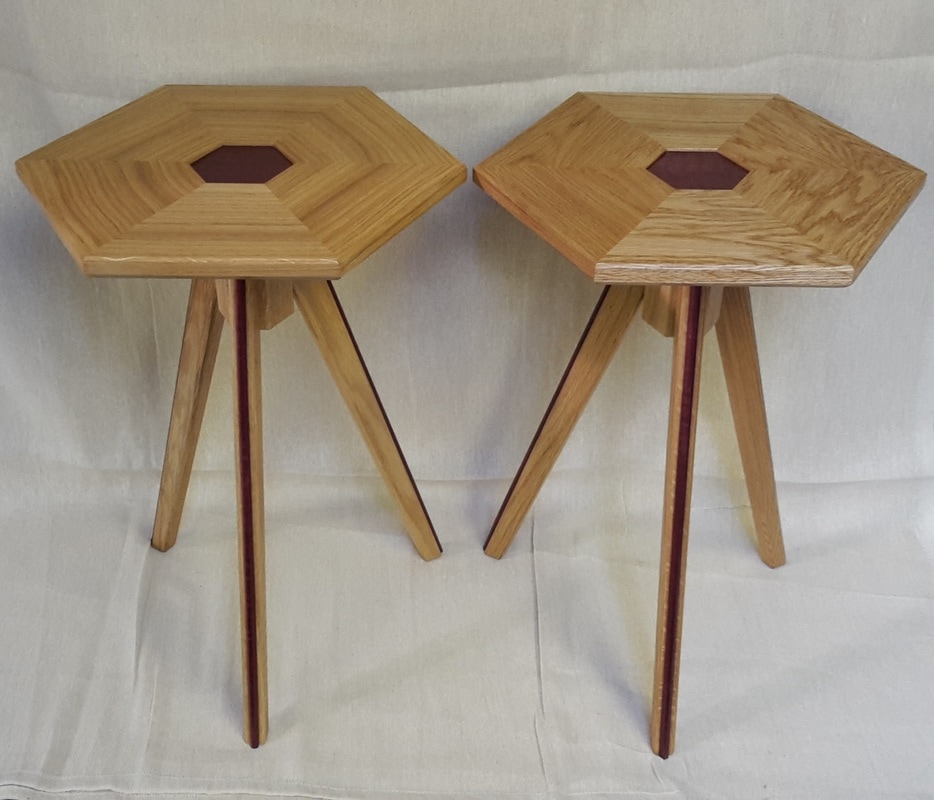Hi Richard, good question

. I broke the rules a little bit when I made those tables. Of course I could have veneered some ply or MDF but I had some small sections of oak I wanted to use, offcuts from a larger job. I rather liked the look of the solid wood as well.
I gave some thought to minimising the movement, I had read that Alan Peters insisted on plywood tongues in similar joints, (mitres I think it was) to minimise the joints opening up, I had also read that Matthew Burt had designed and made a table top with very thick workshop cut veneers which tapered to a point at the centre of the top, he said this was pushing the limits on such a large area. With these points in mind I used plywood tongues which were quite wide and thick leaving about 2mm to 3mm of solid wood above and below the tongues, the width of the tongues went in about 25mm into each solid wood section, I hoped this would simulate a veneer at the joint of each section, these were glued together with cascamite which as you would know is quite a rigid glue which again I hoped would hold it all together restricting movement. The design of the tops does away with a centre point which I also believed would help, each section is quite small so I thought I had a good chance of things working out. I first made a prototype which after three months in my workshop, with its massive climate changes, held up, so I made some with curved legs and put them up for sale in the Somerset Guild of Craftsmans gallery. Two pairs sold very quickly, one pair were still in the gallery when it had an ingress of rain water, the tops got wet and yes after they dried small gaps appeared on the inside of the joints about 5mm long, I replaced these tops. Undeterred I made three more pairs with the straight legs, these sold fairly quickly but did spend some time in the now damp gallery, which did not have any affect on the tops. None of them have been returned to me and no complaints received, everything I make comes with a guarantee, if any faults arise I will either repair (to it's original condition) or replace the item free of charge, so whoever bought them would have no reason not to contact me if they were faulty. I may still have the prototype, if I do I'll post a photo of the top, I may have given it away though, I can't remember

If I had to make them again and purchase the wood for the tops rather than use offcuts as before, I probably would cut veneers and use a plywood core.
I just remembered, I also made one pair of tables but I had no offcuts left so I made solid tops cut to shape with the centre cut out for the contrasting centre wood, they didn't look as nice being one piece of wood but my customer was happy and no problem with movement





































